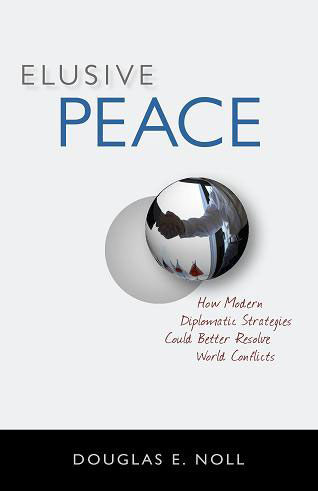People fear peacemaking. They fear the uncertainty of the outcome. They doubt their own abilities to mak e peace. They often doubt the competency of the peacemaker. They have high levels of anxiety because everything seems confused and chaotic. In addition, their pre-conscious brain is signaling danger and invoking freeze, flee, or fight responses. This is normal and expected behavior. Nevertheless, you, the peacemaker, must not get caught up in the swirling emotions of the parties. The best strategy is to maintain a “non-anxious” presence.
e peace. They often doubt the competency of the peacemaker. They have high levels of anxiety because everything seems confused and chaotic. In addition, their pre-conscious brain is signaling danger and invoking freeze, flee, or fight responses. This is normal and expected behavior. Nevertheless, you, the peacemaker, must not get caught up in the swirling emotions of the parties. The best strategy is to maintain a “non-anxious” presence.
The capacity to maintain a “non-anxious” presence within a conflict may be one of your most significant capabilities. Not only can this capacity enable you to be more clear- headed about solutions and more adroit in difficult situations but, a non-anxious presence will modify anxiety throughout the entire group. This aspect of leadership can sometimes do more to resolve issues than the ability to come up with good solutions.
Do not confuse a “non-anxious presence” with the idea of staying cool under pressure. A non-anxious presence is a true state of inner calm. You are connected to your people, but detached from their swirling emotions. Peacemakers are like transformers in an electrical circuit. To the extent that they are anxious themselves, when anxiety in the peacemaking session permeates their being, it potentially comes back into the session at a higher voltage. Consequently, to the extent that they can recognize and contain their own anxiety, they function as a step-down transformer or perhaps as a circuit breaker. In this case, their presence, far from escalating conflict, actually serves to diminish its destructive effect.
Two aspects of non-anxious presence are worth highlighting. The first is playfulness. Anxiety’s major tone is seriousness, often an affliction in itself. It is always content- oriented. Its major antidote is playfulness, especially with those for whom you feel responsible. Your capacity to be paradoxical, challenging, earthy, sometimes crazy, and even “devilish,” often can do more to loosen knots in a peacemaking session than the most well-meaning “serious” efforts. This is not because being paradoxical affects the content in the heads of others (reverse psychology), but because the act of being playful frees others by forcing them out of their serious “games.” I have gotten up from a table in the midst of a very heated dialogue between counsel and stepped into a nearby wastebasket. I stood there until they looked up, incredulously. A fifty-year-old man dressed in a dark business suit, standing in an office wastebasket was too much for them. I grinned at them, they laughed, and the dialogue loosened up. We take ourselves way too seriously in our conflicts and in our efforts to resolve them. This is not to say that peacemaking is not serious, difficult work. It is. But we cannot get too carried away with it. When you have to assume the mantle of peacemaker, keep the load light when you can.
The opposite of playful functioning, which is most likely to heighten the seriousness in a system, is diagnostic thinking. Diagnostic thinking tends to increase polarization, intensifies anxiety, and is the natural manifestation of anxiety. When you become over-analytical, you become anxious about you own analysis. Am I right or not? Will I solve this conflict or not? The parties will pre-consciously sense your seriousness and will misinterpret it as worry or concern. Their anxiety will skyrocket, with the usual, predictably negative conflict behavior.
The other aspect of “non-anxious” presence is hope. If the conflict is escalated enough for a peacemaker to intervene, the parties have probably lost any hope that it can be resolved, not to mention transformed. Maintaining a “non-anxious” presence exudes confidence in the parties that they can, together, work themselves out of the conflict. Most importantly, it gives the parties hope. With hope, they will try harder, be more engaged in the peacemaking process, be less competitive and adversarial, and ultimately find the solutions they need. They can be skeptical about outcomes and wary about the peacemaking process. As long as you provide them hope by maintaining your “non-anxious” presence, they will come through.
Douglas E. Noll, Lawyer to Peacemaker
Creator of Negotiation Mastery for the Legal Pro
California Lawyer Magazine, California Attorney of the Year 2012



